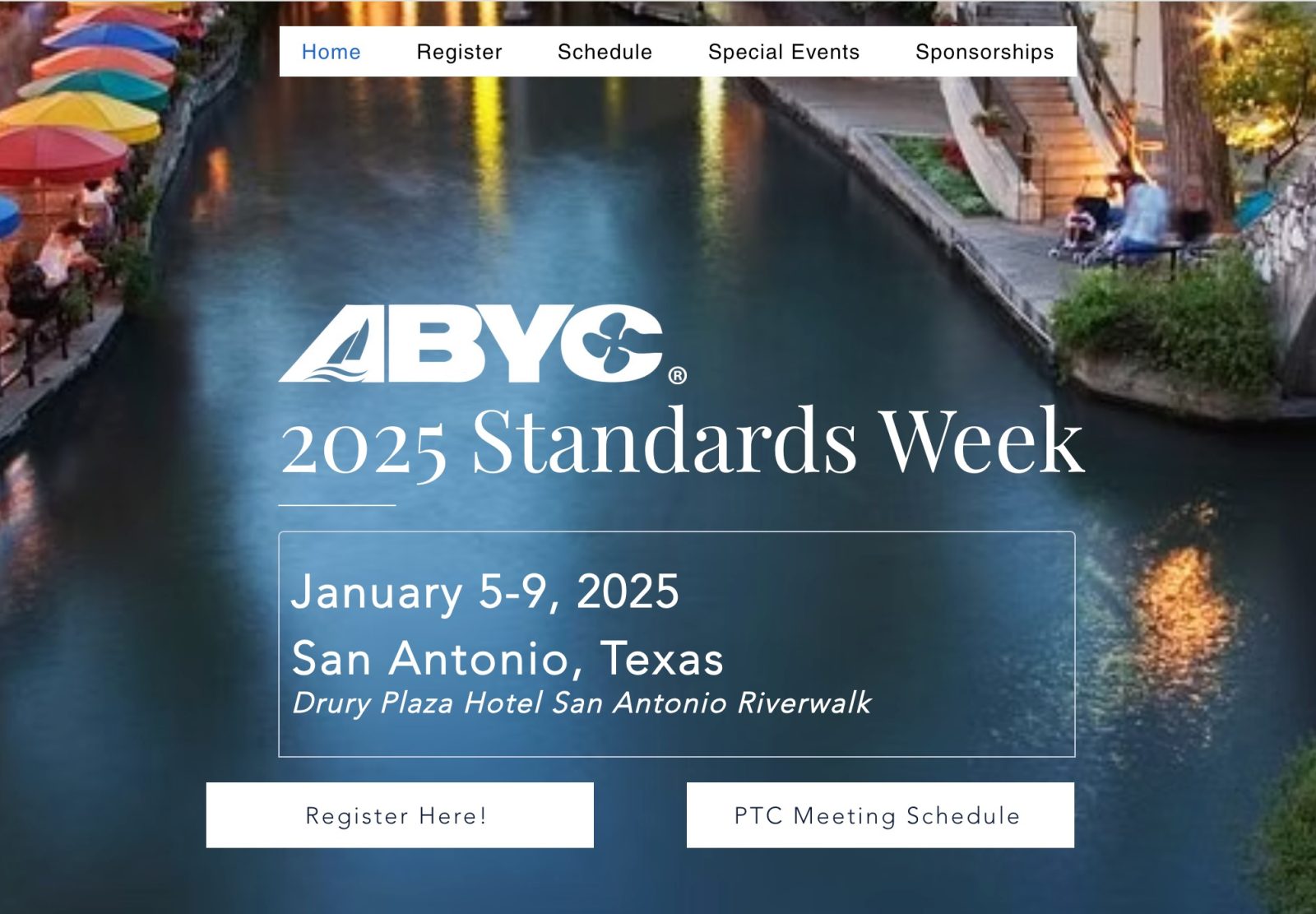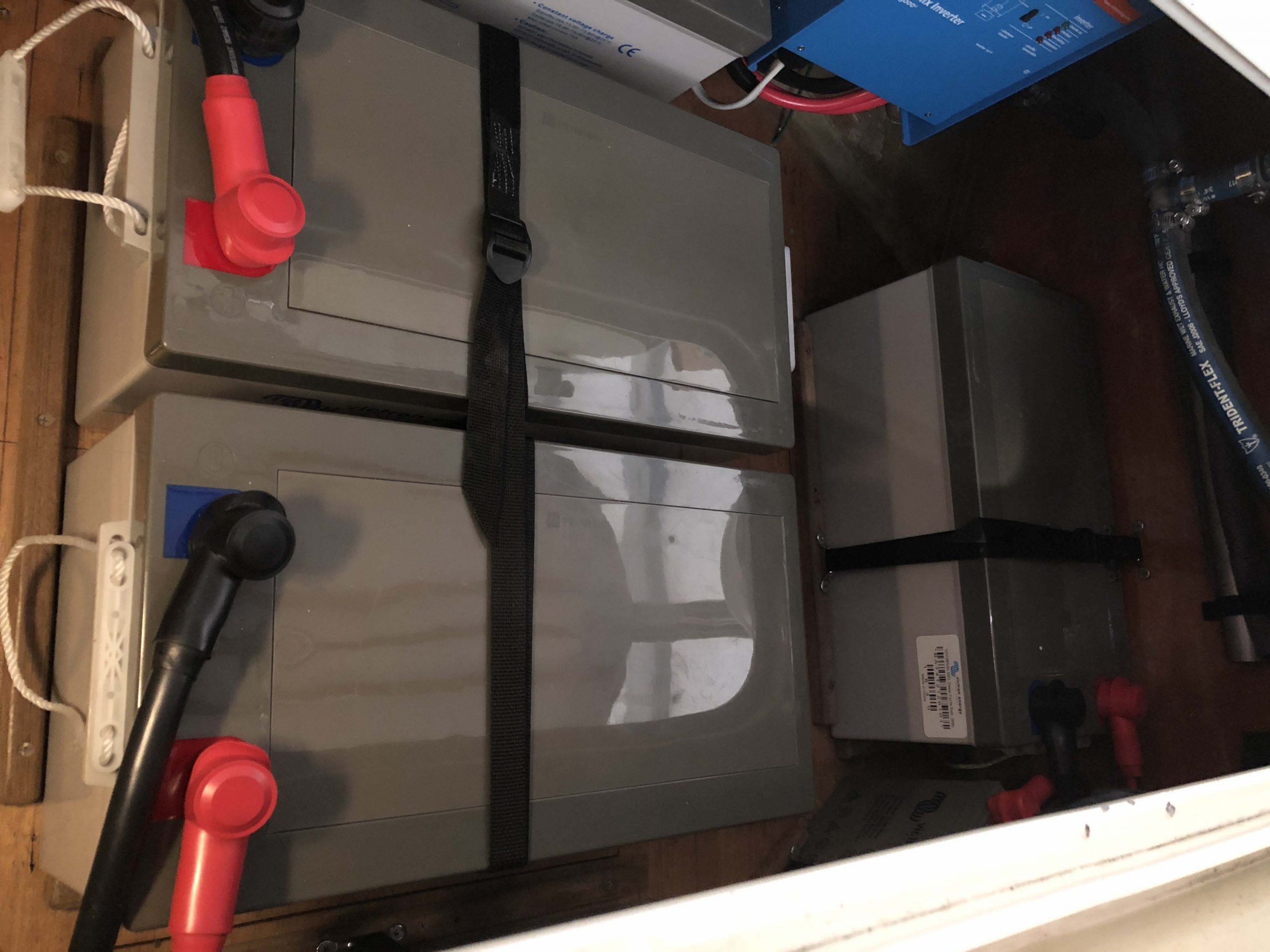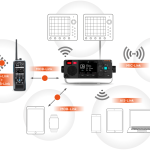ABYC 2025 Standards Week, improving safety and evolving standards

ABYC published its first lithium-ion battery standard in the summer of 2022. At the time, I wrote an entry on the standard and expressed some concerns about some requirements not in the standard as well as a strong reliance on manufacturers’ documentation and specifications. My first paragraph began with the words, “I’m not an expert on the many intricacies involved in getting a standard ratified.” Attending this year’s ABYC Standards Week provided me with a deeper understanding of the process. Additionally, since I had some concerns about the initial version, it only seems fair that I participate in its revision. So, here’s what I’ve learned so far.
If you ask 100 kids what they want to do when they grow up, I’d bet that none will say, “I want to develop standards for the safe installation of electrical systems onboard recreational boats.” More than one long time attendee referred to my first meeting as akin to learning how the sausage is made, further tarnishing the image of standards developer as a career of choice. But, let’s be honest, the people in the room at an ABYC project technical team (PTC) meeting are my people. They are the people who sweat the details and speak in the same word salad of acronyms and jargon that is my daily vocabulary. So, despite a forecast of rain and near-freezing temperatures, I boarded an airplane bound for San Antonio Texas, with my destination set for the Drury Plaza Hotel San Antonio Riverwalk.
In San Antonio, I attended the electrical PTC meetings focused primarily on revisions to E-13, the lithium-ion battery standard. In the room, I found a group of about 50 participants, including electrical component manufacturers, marine electricians, boat builders, engine manufacturers, surveyors, casualty investigators, boat owners, government agencies, and more. The group was impressive with experts representing nearly every facet of marine electrical work. Plus, a few industry legends thrown in for good measure.
As the day got started conversation quickly turned to the task at hand: reviewing the standards. The primary work comes from comments submitted during a public comment period. ABYC’s comment process requires each commenter to explain a problem with the current standard and propose a solution. The PTC then reviews those comments and solutions, discusses, and votes on a course of action. Typically, that course of action is to accept, accept in principle, reject, or table the suggestion.
Comments range from grammatical and editorial changes to suggestions for entirely new requirements within the standard. Not surprisingly, the editorial comments tended to be less controversial and less vigorously debated than those that include significant changes to the standard’s requirement.
Some of the most spirited debates turned on word selection between “should” and “shall.” Effectively, “should” means the standard is recommending something but does not mandate it. “Shall”, on the other hand, signifies a requirement. Typically, “should” end up in notes and “shalls” in the standard itself. I think everyone understood the importance of that distinction and gave the decision appropriate weight.
During the meeting, conversations tended to meander and cover a lot of ground before being dragged back to focus by votes. There were regular reminders from ABYC staff and committee leadership that these are safety standards and not best practice or quality installation guides. I think at some point during the three days, everyone in the room – myself most definitely included – lost sight of that balance and had to be reined back in.
ABYC clearly states that standards must reduce hazards identified from actual accidentsor those that have a high probability of occurring. This requirement pulled the committee out of several rabbit holes.

In my reviews of lithium-ion batteries, I have been frustrated by the documentation included with most batteries and the amount of information that goes undisclosed. The current revision of E-13 requires battery manufacturers provide information on how to safely install and operate the battery. On a regular basis, information required in the standard goes undisclosed. It is troubling to me to see this because, I believe, these requirements are among the easiest to meet. Compliance simply requires documentation with critical information clearly spelled out.
I was encouraged to see the committee’s awareness of compliance with E-13 as it is currently written. The committee collectively understood that simply adding a requirement to the standard won’t ensure compliance. In fact, the committee is oncerned that if requirements are raised too high, the already spotty attention to the standard might worsen.
One of the primary catalysts to my attending Standards Week is my concern over full charge protections employed by an increasing number of lithium-ion battery management systems (BMS). Full charge protections, typically found in self-contained (often misnamed “drop-in”) batteries, disable charging when the battery reaches full charge to protect the cells from potential damage caused by low current, high voltage sustained charging.
There are applications in which this behavior is appropriate and desirable. However, there are also systems in which this behavior causes unintended consequences that can lead to scenarios including a full disconnection of the batteries. My feeling is that this behavior must be disclosed when it is present in the BMS and the standard is an appropriate place to require that disclosure. No conclusions have been reached about how and if the standard will handle it. Regardless of the outcome, I’m glad I raised the issue and got the talented team of people in the room thinking about it.
By the end of E-13 review, quite a few decisions had been made, but a lot of work had also been pushed to the E-13 subcommittee. I have participated in a few of the subcommittee meetings and know those tasks are in good hands. But, I also know there’s a lot of work to resolve all the concerns and issues that were raised.
Want to know more about ABYC’s standards making process? They have a nice primer on the process at https://abycinc.org/standards/standards-development/.
Overall, I was impressed by the process and enjoyed my limited participation. I can now say that I know how the sausage is made. Perhaps in a departure from actual sausage, I feel better about the finished product now; having seen how it is made. I will surely be back for future events and hopefully better prepared and able to make more targeted contributions.













Ben – interesting article. Thanks for shining a light on the process. And many thanks to you and all the other ABYC volunteers who put in all the time and mind-numbing calculations needed to produce standards that make it possible for installers and end-users to have confidence in our work.
Well done.
As a long time Aviation standards participant, I found the meeting very interesting, as well. As a consensus process, it was a bit odd to see Robert’s rules used at the PTC level but I soon saw the advantages it offered but also was curious why/where/how a non-concur would be lodged in the final process.
With the burgeoning DIY installation and system design community, it is great to see the standards are safety first and easy enough to comply with, or at least be prepared to document any equivalent level of safety for a survey.
I am completely puzzled by the documentation non-compliance today and the acceptance of FB, marketing and other sources as authoritative. Like a 20kA AIC at 125v fuse for all possible SC scenarios (internal SC, external SC), or a battery disconnect switch, it’s easy enough to comply with.
For the equipment manufacturers, what I have seen is not a high hurdle at all, given the severity of the hazards the standards are protecting the recreational marine community from encountering.
Nice article (as always!)
After the 6th reference to ‘lithium-ion’ I resigned myself to not to read further knowing you would not post anything about modern onboard boat batteries i.e. Lithium Iron Phosphate (LiFePo4)…
I converted my 40′ sloop 3 years ago to all electric including PMAC propulsion with 2kW of bifacial PV and 800 aH at 48v to propel me merrily along…
If this is all the ABYC is interested in then I’m happy not to follow along…
Fair Winds…
David,
Your premise seems to be that a LiFePO4 battery isn’t a lithium-ion battery. It is. Although the standard generically addresses all types of lithium batteries, the assumption is that nearly all non-propulsion installations will be LiFePO4. However, the standard applies equally regardless of the individual chemistry selected.
-Ben S.